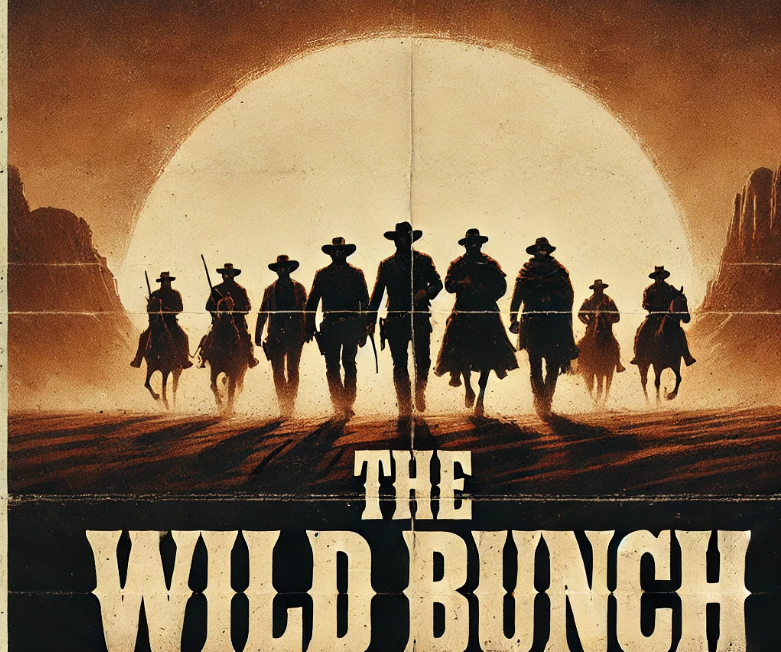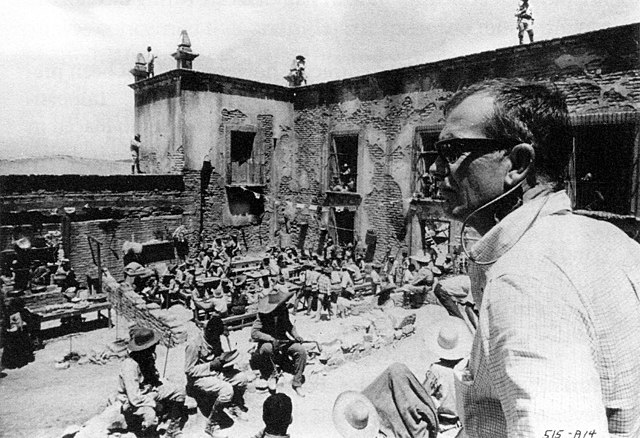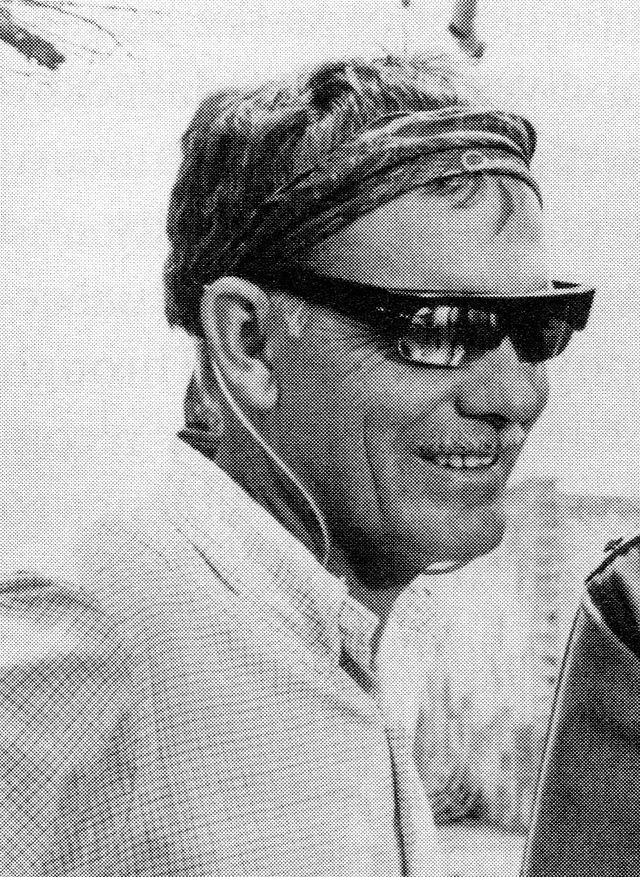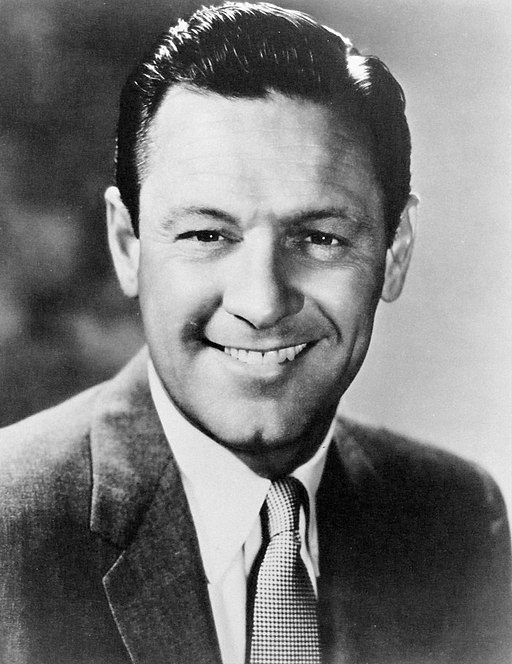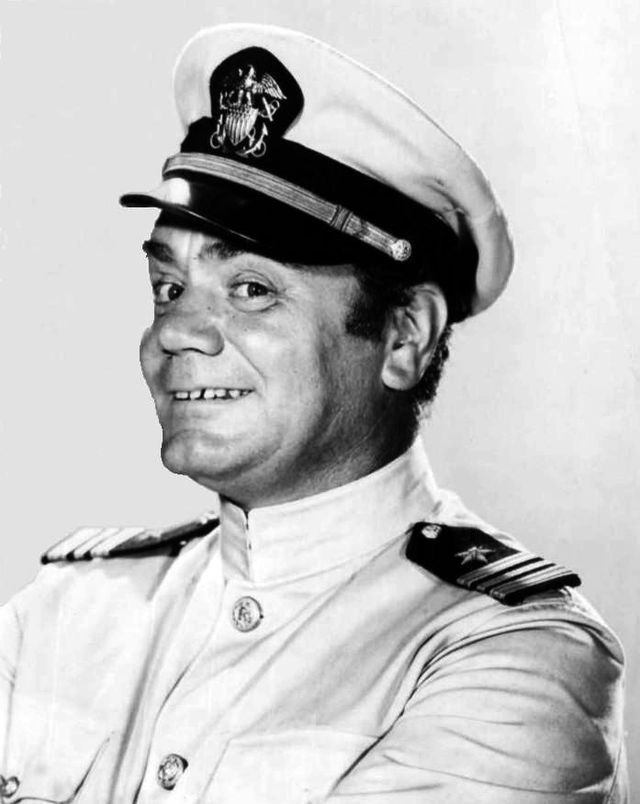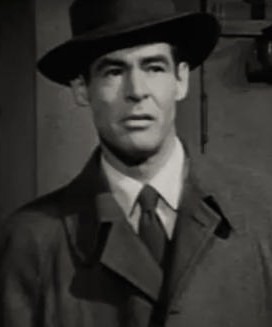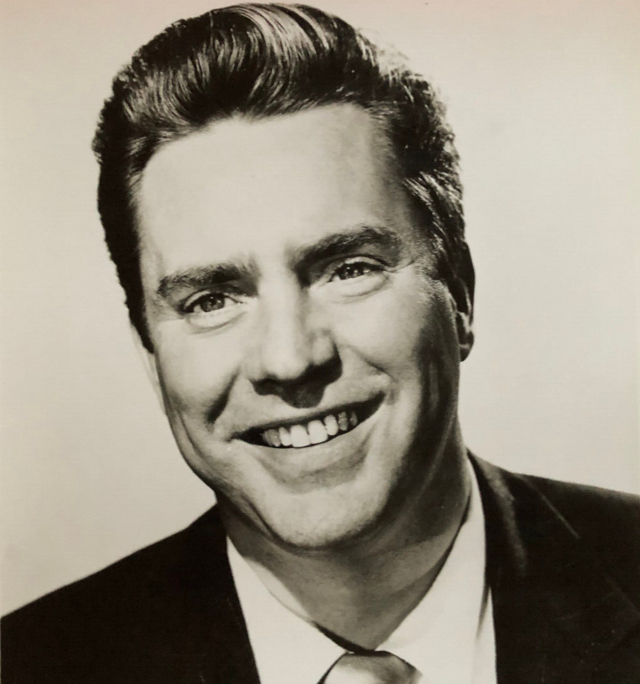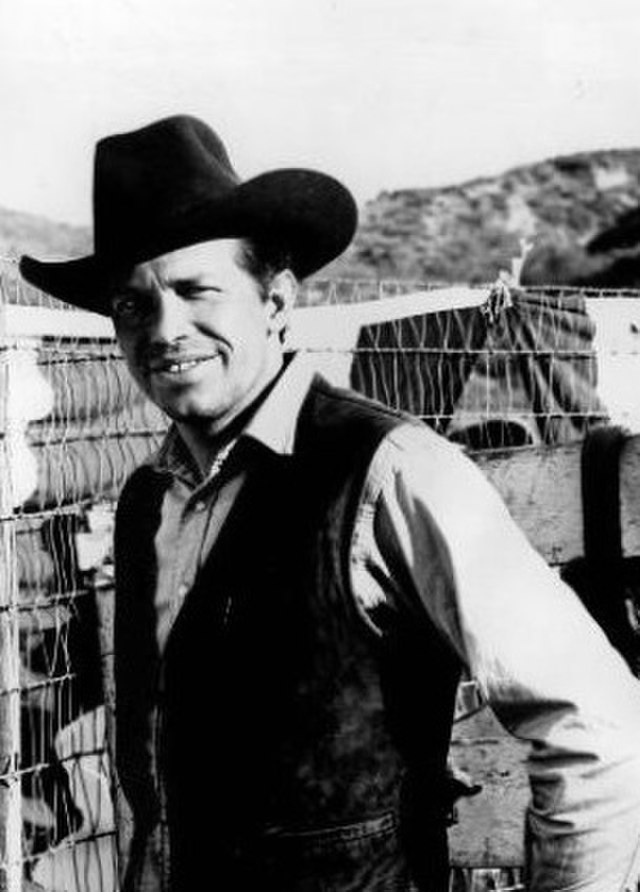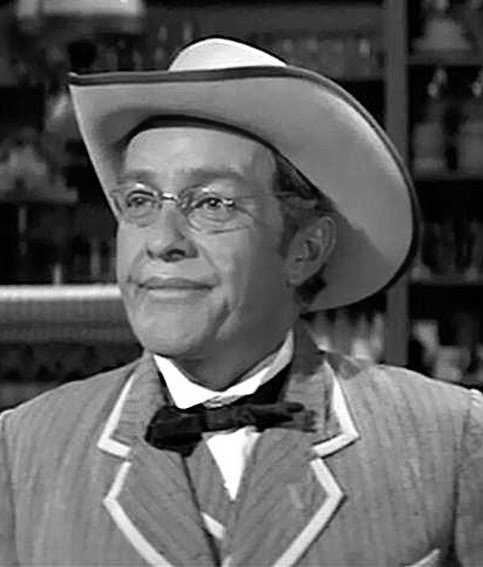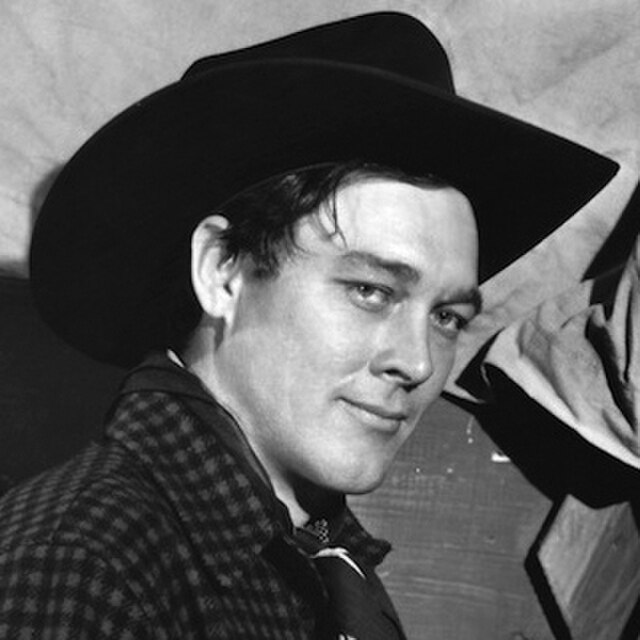The Wild Bunch – 1969
The Wild Bunch is set in 1913, on the brink of World War I, in a world undergoing seismic changes due to industrialization and modern warfare. It follows a gang of aging outlaws led by Pike Bishop, who is struggling to adapt to a world that is leaving men like him behind. The story opens with a daring but ill-fated robbery of a railroad office in a small Texas town. Pike and his gang are ambushed by a posse of bounty hunters led by Deke Thornton, a former outlaw and Pike's old partner. The botched heist leaves many dead, including civilians and gang members, and sets the tone for the film’s exploration of violence, loyalty, and morality.
The surviving members of the gang—Pike, Dutch, the Gorch brothers (Lyle and Tector), and Ángel—flee south to Mexico. They find themselves in a harsh and politically unstable environment, dominated by General Mapache, a corrupt and brutal Mexican warlord. Mapache offers the gang a lucrative job: to rob a U.S. Army weapons shipment and deliver it to him. The group reluctantly accepts, driven by greed and the need to adapt in a world where their way of life is rapidly fading.
As the gang carries out the heist, tensions rise due to Ángel’s personal vendetta against Mapache, who has exploited and oppressed his village. Ángel secretly diverts one case of rifles to his people, an act that enrages Mapache when he discovers it. Meanwhile, Thornton and his posse close in on the gang, adding another layer of peril.
The climactic scenes unfold in Mapache’s stronghold. After Ángel is captured and tortured by Mapache, Pike and his gang decide to confront the warlord, driven by a mix of loyalty, honor, and perhaps their own sense of mortality. The final showdown is a legendary orgy of violence, where Pike and his men slaughter Mapache and his soldiers in a suicidal blaze of glory. The gang is ultimately annihilated, but their defiance leaves a lasting impression on Thornton, who is forced to reflect on his own compromises and role in the changing world.
The film closes with Thornton abandoning his pursuit of the outlaws and joining forces with Freddie Sykes, one of the gang’s allies, hinting at a yearning for a different way of life.
________________________________________
Analysis:
The Wild Bunch is often hailed as a groundbreaking and controversial film that redefined the Western genre. Its themes, characters, and cinematic techniques are richly layered, making it a complex exploration of morality, violence, and the passage of time.
Themes:
• The End of an Era:
The film explores the demise of the Old West and the outlaws who thrived in it. Pike and his gang represent relics of a bygone age, clinging to their code of loyalty and honor in a world that values profit and efficiency over human connection. The encroaching modernity—symbolized by the automobile, machine guns, and industrialization—marks the inevitability of change.
• Violence and Morality:
Peckinpah’s depiction of violence is both graphic and poetic. The film doesn’t shy away from the brutality of its characters, but it also forces viewers to confront the consequences of that violence. The blood-soaked finale is a culmination of the gang’s inability to reconcile their past with the present.
• Loyalty and Brotherhood:
Despite their flaws and self-interest, Pike and his men share an unspoken bond of loyalty. This is most evident in their decision to rescue Ángel, even though it means certain death. Their camaraderie is portrayed as a stark contrast to the treachery and betrayal they encounter in the outside world.
• Redemption and Legacy:
The gang’s final stand is both tragic and redemptive. By choosing to die on their terms, they reclaim a sense of dignity and purpose that had eluded them in their later years. Their sacrifice also underscores the question of what it means to live and die with honor.
Characters:
• Pike Bishop: A complex antihero haunted by past failures and driven by a desperate need to maintain some semblance of control in a chaotic world. Pike embodies the fading ideals of leadership and honor, even as he compromises them.
• Deke Thornton: A man caught between his past as an outlaw and his present as a reluctant lawman. Thornton serves as a mirror to Pike, highlighting the choices and sacrifices required to survive.
• Ángel: The moral center of the gang, motivated by a deep sense of justice and loyalty to his people. His actions drive the gang toward their ultimate confrontation with Mapache.
Cinematic Style:
Peckinpah’s innovative use of slow-motion cinematography and rapid editing in the action sequences revolutionized the portrayal of violence in film. The chaotic and visceral gunfights, particularly the opening ambush and the climactic massacre, remain some of the most influential scenes in cinema history.
The film’s dusty, sun-scorched landscapes, captured brilliantly by cinematographer Lucien Ballard, evoke a sense of desolation and decay. Jerry Fielding’s haunting score further enhances the emotional weight of the story.
Cultural Impact:
Upon its release, The Wild Bunch was both celebrated and criticized for its graphic violence and nihilistic tone. Over time, it has been recognized as a masterpiece that challenged traditional Western tropes and reflected the turbulent social and political climate of the 1960s. Its influence can be seen in countless films, from Apocalypse Now to Reservoir Dogs.
________________________________________
The Wild Bunch is more than just a Western—it’s a profound meditation on human nature and the inevitability of change. Its characters, themes, and visual style continue to resonate, making it a timeless and essential piece of cinematic art.
Classic Trailer The Wild Bunch
Full Cast of The Wild Bunch
Main Cast:
• William Holden as Pike Bishop
• Ernest Borgnine as Dutch Engstrom
• Robert Ryan as Deke Thornton
• Edmond O'Brien as Freddie Sykes
• Warren Oates as Lyle Gorch
• Jaime Sánchez as Ángel
• Ben Johnson as Tector Gorch
• Emilio Fernández as General Mapache
Supporting Cast:
• Albert Dekker as Pat Harrigan
• Bo Hopkins as Clarence "Crazy" Lee
• Dub Taylor as Rev. Wainscoat
• Paul Harper as Ross (one of Thornton's bounty hunters)
• L. Q. Jones as T.C. (another bounty hunter in Thornton's posse)
• Strother Martin as Coffer (bounty hunter)
• Chano Urueta as Don José
• Elsa Cárdenas as Aurora
Other Notable Appearances:
• Jorge Russek as Majordomo
• Fernando Wagner as Commander Mohr
• Rayford Barnes as Buck
• Aurora Clavel as Ángel's Girlfriend
• Sonia Amelio as Teresa
Analysis of Sam Peckinpah's Direction in The Wild Bunch
Sam Peckinpah’s direction in The Wild Bunch (1969) is widely regarded as a groundbreaking achievement, redefining not only the Western genre but also the art of filmmaking itself. Peckinpah infused the film with his uncompromising vision, blending gritty realism with operatic grandeur, and creating a cinematic experience that remains both visceral and poetic.
________________________________________
Key Elements of Peckinpah’s Direction:
Brutal Realism and the Redefinition of Violence:
• Peckinpah's portrayal of violence was revolutionary, challenging the sanitized depiction of gunfights typical of earlier Westerns. In The Wild Bunch, violence is chaotic, messy, and morally ambiguous.
• He used slow-motion sequences intercut with rapid edits to emphasize the carnage, forcing the audience to confront the physical and emotional toll of violence. The opening ambush and the climactic massacre are particularly notable for their operatic yet unflinching depiction of death.
• By making the audience complicit in the spectacle of violence, Peckinpah invited viewers to question its role in both entertainment and society, mirroring the turbulence of the 1960s.
Subversion of the Western Genre:
• Peckinpah dismantled the romanticized myths of the American West. Instead of noble cowboys and clear-cut morality, his characters are morally flawed antiheroes clinging to outdated codes of honor.
• The film’s setting—a world transitioning to modernity, with automobiles and machine guns supplanting horses and revolvers—underscores the death of the Old West and the obsolescence of its inhabitants.
• Themes of loyalty, betrayal, and survival dominate the narrative, reflecting a harsher and more complex reality than traditional Westerns often portrayed.
Complex Characters and Moral Ambiguity:
• Peckinpah’s direction drew nuanced performances from the cast, especially William Holden (Pike Bishop) and Robert Ryan (Deke Thornton). These characters are not presented as heroes or villains but as men shaped by their circumstances and struggling with their own moral failings.
• He humanized the outlaws, showing their camaraderie, vulnerabilities, and personal codes of honor, even as they engaged in morally dubious actions.
• General Mapache and his army, though antagonists, are not entirely evil, reflecting Peckinpah’s commitment to portraying shades of gray.
Visual and Aesthetic Innovation:
• Cinematographer Lucien Ballard worked closely with Peckinpah to craft the film’s striking visuals. The wide, dusty landscapes of Mexico convey both beauty and desolation, serving as a metaphor for the dying frontier.
• The director’s use of rapid cross-cutting and multiple camera angles during action sequences created a sense of chaos and immersion. This technique has since influenced countless filmmakers, from Martin Scorsese to Quentin Tarantino.
• Peckinpah juxtaposed idyllic, almost pastoral moments with sudden eruptions of violence, highlighting the fragility of peace in a brutal world.
Thematic Depth and Emotional Resonance:
• Peckinpah infused The Wild Bunch with a deep sense of melancholy and nostalgia. The gang’s struggle to survive in a world that no longer needs them mirrors Peckinpah’s own lament for the passing of simpler, more honest times.
• The themes of loyalty and redemption are central to the film’s emotional core. The gang’s final act—choosing to die together in a futile stand against overwhelming odds—is as much about reclaiming their humanity as it is about vengeance or honor.
• The film’s exploration of shifting morality and the cost of survival resonates far beyond the Western genre, reflecting universal human experiences.
Peckinpah’s Personal Imprint:
• Known for his volatile personality and battles with studios, Peckinpah poured his own struggles into the film. His disdain for authority, romanticization of outlaws, and fascination with violence are evident throughout.
• The film’s depiction of a world where survival often requires compromise reflects Peckinpah’s own cynicism and complex worldview. He used The Wild Bunch to critique both the idealization of the past and the brutality of the present.
________________________________________
Legacy of Peckinpah’s Direction:
Peckinpah’s direction in The Wild Bunch forever altered the landscape of cinema. It redefined what a Western could be, paving the way for the revisionist Westerns of the 1970s. His innovative techniques, especially in editing and action choreography, became a template for future filmmakers. Most importantly, Peckinpah’s fearless exploration of complex characters and moral ambiguity elevated the Western from entertainment to art, making The Wild Bunch not just a film about outlaws, but a meditation on the human condition.
In directing The Wild Bunch, Peckinpah captured a dying way of life with an intensity and depth that ensured its immortality in film history.
Analysis of William Holden’s Performance in The Wild Bunch
William Holden delivers a masterful and deeply layered performance as Pike Bishop, the aging leader of the titular "wild bunch." Holden’s portrayal of Pike is a cornerstone of the film’s success, bringing humanity, complexity, and gravitas to a character who is both a product of his time and a tragic figure grappling with the relentless march of change.
________________________________________
Key Aspects of Holden’s Performance:
Commanding Presence and Leadership:
• As the gang’s leader, Pike exudes authority, and Holden’s performance captures this with a quiet intensity. His every gesture and word convey a man who commands respect despite his flaws.
• Holden imbues Pike with a weathered wisdom, showing a man who has seen the highs and lows of a life lived on the edge. His confidence in leading the group feels earned, but his internal doubts subtly surface, adding depth to his portrayal of a leader burdened by responsibility.
Vulnerability Beneath the Tough Exterior:
• Holden masterfully portrays Pike as more than just a hardened outlaw. Beneath the stoic demeanor lies a man haunted by his past failures and deeply aware of his mortality.
• In quieter moments, such as his private reflections on his injuries or his regret over abandoning a fallen comrade, Holden reveals Pike’s vulnerability. These moments add emotional depth to the character, making him relatable and human.
• Pike’s sense of weariness—both physical and emotional—is palpable in Holden’s performance, particularly in his expressions and body language. He moves and speaks like a man who knows his time is running out.
Complexity of Morality:
• Holden captures Pike’s moral ambiguity with finesse. Pike is neither a hero nor a villain but a man navigating a morally complex world. He is capable of ruthlessness, yet he is governed by a personal code of honor.
• In scenes where Pike reflects on the gang’s actions or wrestles with difficult decisions, Holden conveys the weight of Pike’s internal struggle. He makes the audience empathize with a character who commits questionable acts but is still striving for redemption.
Dynamic Relationships with the Ensemble:
• Holden’s chemistry with his fellow cast members enhances the gang’s camaraderie and tension. His interactions with Ernest Borgnine (Dutch Engstrom), in particular, highlight a long-standing partnership built on mutual respect and trust.
• With Robert Ryan (Deke Thornton), Holden brings a charged dynamic that feels rooted in shared history and betrayal. Their scenes together convey a sense of unspoken regret and understanding, despite being on opposite sides of the law.
• Holden also shows Pike’s paternal side, especially in his protective attitude toward Jaime Sánchez’s Ángel, which underscores Pike’s lingering sense of honor and responsibility.
Transformation in the Climactic Moments:
• In the film’s climactic sequences, Holden’s performance reaches its emotional peak. Pike’s decision to confront General Mapache and sacrifice himself for Ángel is imbued with a mix of defiance, resignation, and redemption.
• Holden’s steely resolve in the final showdown, contrasted with the subtle hints of sadness in his expressions, captures the complexity of Pike’s ultimate act. It’s not just a gesture of loyalty but also a way for Pike to reclaim his sense of purpose and dignity.
Subtlety and Nuance:
• Holden’s portrayal is remarkable for its restraint. He doesn’t overplay Pike’s emotions but instead lets them simmer beneath the surface. This subtlety makes moments of explosive anger or profound reflection all the more impactful.
• His understated delivery of lines, combined with his expressive eyes and weathered face, allows the audience to read volumes into his silences and pauses.
________________________________________
Why Holden’s Performance Stands Out:
• Authenticity: Holden’s portrayal feels lived-in, as if Pike is a reflection of the actor’s own experiences and aging in Hollywood. At the time, Holden was an older star navigating a changing film industry, much like Pike was an aging outlaw in a world that no longer valued his kind.
• Emotional Resonance: Holden makes Pike more than a character; he makes him a person. The audience feels Pike’s triumphs, regrets, and desperation, making his journey deeply affecting.
• Symbolic Weight: Holden’s Pike serves as a metaphor for the end of an era, not just in the West but in cinema itself. His performance captures the fading glory of traditional heroes, marking a shift toward more complex and flawed protagonists.
________________________________________
Legacy of Holden’s Performance:
William Holden’s work in The Wild Bunch is often considered one of his finest performances. He brought a level of depth and humanity to Pike Bishop that elevated the character beyond the archetype of a Western outlaw. By portraying Pike as a man caught between the past and an uncertain future, Holden gave audiences a timeless, poignant figure who remains central to the film’s enduring impact.
Important Quotes from The Wild Bunch:
Pike Bishop:
• “We’re not gonna get rid of anybody. We’re gonna stick together, just like it used to be. When you side with a man, you stay with him! If you can’t do that, you’re like some animal. You’re finished! We’re finished! All of us!”
This quote reflects Pike's sense of loyalty and his desperation to hold onto the ideals of brotherhood, even as the world around him falls apart.
• “It’s not what you give; it’s what you take.”
A cynical reflection of Pike’s worldview, shaped by his years of surviving as an outlaw.
• “We all dream of being a child again, even the worst of us. Perhaps the worst most of all.”
A poignant line that reveals Pike's inner vulnerability and longing for a simpler, more innocent time.
________________________________________
Dutch Engstrom:
• “That ain't like you, Pike. Giving up so easy.”
Dutch calls out Pike’s wavering resolve, reinforcing the theme of perseverance in the face of overwhelming odds.
________________________________________
Deke Thornton:
• “We’re after men, and I wish to God I was with them.”
Thornton’s conflicted loyalty is evident here, as he laments being forced to pursue his former comrades instead of standing alongside them.
• “I’ve given my word.”
Thornton’s succinct reminder of his own moral code, even as it traps him in a role he doesn’t fully embrace.
________________________________________
General Mapache:
“The gringos... they come with lies in their mouths, and the stink of whiskey on their breath.”
Mapache’s disdain for outsiders reflects the cultural and political tensions central to the story.
________________________________________
Freddie Sykes:
“We’re gonna stick together, aren’t we, Pike?”
A simple yet loaded question that underscores the theme of loyalty and the fragility of trust within the group.
________________________________________
The Wild Bunch (Collective):
“Let’s go.”
Spoken by Pike in the final act, these simple words launch the gang into their suicidal confrontation with Mapache. It’s a moment that symbolizes their collective decision to face their fate with defiance and unity.
Classic Scenes
The Opening Ambush:
• Description:
The film begins with the gang disguised as soldiers riding into town to rob a railroad office. As the robbery unfolds, they are ambushed by Deke Thornton’s bounty hunters. A massive shootout erupts, killing civilians, bounty hunters, and gang members alike.
• Significance:
o This scene immediately sets the tone of the film, showcasing Peckinpah’s unflinching depiction of violence and moral ambiguity.
o The chaotic shootout introduces the gang as flawed antiheroes, while the indiscriminate carnage underscores the brutality of their world.
o The use of slow motion and quick edits in the action sequences was groundbreaking and became a hallmark of Peckinpah’s style.
________________________________________
The Bridge Explosion:
• Description:
As part of their getaway plan, Pike and his gang destroy a bridge after crossing it to prevent their pursuers from following. The explosion sends a train and its passengers plummeting into the river below.
• Significance:
o This scene highlights the gang’s resourcefulness and desperation to evade capture.
o The visually stunning explosion is both thrilling and symbolic, representing the destructive path the gang leaves behind as relics of a dying age.
o It reinforces the idea that their survival often comes at the cost of innocent lives, blurring the lines between heroism and villainy.
________________________________________
Ángel’s Betrayal of Mapache:
• Description:
Ángel secretly takes one of the stolen cases of rifles to help arm his oppressed village. When General Mapache discovers this betrayal, tensions rise, setting the stage for future conflict.
• Significance:
o Ángel’s actions serve as a moral counterpoint to the gang’s often self-serving motivations.
o This subplot adds emotional weight to the story, as Ángel’s idealism and loyalty to his people clash with the gang’s pragmatism.
o It lays the foundation for the climactic confrontation with Mapache, as Pike and the gang must decide whether to abandon Ángel or risk their lives to save him.
________________________________________
The Final Showdown:
• Description:
In the film’s climax, Pike and his gang march into Mapache’s stronghold to rescue Ángel. After killing Mapache, the gang faces off against an overwhelming number of soldiers in a bloody, chaotic battle.
• Significance:
o This sequence is the film’s most iconic and is often cited as one of the greatest action scenes in cinema history.
o The gang’s decision to face certain death together reflects their adherence to their code of loyalty, even as they know their way of life is doomed.
o Peckinpah’s masterful use of slow motion and cross-cutting elevates the violence to operatic levels, making the audience feel both the horror and the tragedy of the gang’s final act.
________________________________________
Pike’s Reflection on the Past:
• Description:
In a quieter moment, Pike reflects on his past mistakes, particularly his decision to abandon a wounded companion to save himself. His regret is palpable, and he shares his thoughts with Dutch.
• Significance:
o This scene humanizes Pike, showing his vulnerability and guilt.
o It highlights one of the film’s central themes: the inevitability of failure and the burden of living with one’s choices.
o William Holden’s performance here is understated yet powerful, conveying Pike’s internal struggles without needing grand gestures.
________________________________________
“Let’s Go” – The Gang’s Last Decision:
• Description:
After a tense deliberation, Pike and his gang decide to confront Mapache and rescue Ángel, fully aware it will likely lead to their deaths.
• Significance:
o This moment is the ultimate expression of the gang’s loyalty and code of honor, even in the face of futility.
o Pike’s simple command, “Let’s go,” encapsulates the stoicism and resolve of men who choose to face their fate on their own terms.
o The slow, deliberate walk of the gang toward Mapache is iconic, emphasizing their unity and defiance.
________________________________________
Thornton Watching the Aftermath:
• Description:
After the final battle, Deke Thornton surveys the battlefield, surrounded by the bodies of his former comrades. His expression is a mixture of sadness, regret, and resignation.
• Significance:
o Thornton’s reaction serves as a poignant epilogue, reflecting on the cost of loyalty and the futility of violence.
o It reinforces the film’s themes of nostalgia and the end of an era, as Thornton is left to contemplate his role in the downfall of the gang.
Awards and Recognition
Academy Awards (1970):
• Best Original Screenplay: Nominated
o Walon Green, Roy N. Sickner, and Sam Peckinpah
• Best Original Score: Nominated
o Jerry Fielding
Directors Guild of America Awards (1970):
• Outstanding Directorial Achievement in Motion Pictures: Nominated
o Sam Peckinpah
National Society of Film Critics Awards (1970):
• Best Cinematography: Won
o Lucien Ballard
Motion Picture Sound Editors Awards (1970):
• Best Sound Editing – Feature Film: Won
• Best Sound Editing – Dialogue: Won
National Film Preservation Board (1999):
• National Film Registry: Inducted
International Film Music Critics Award (2014):
• Best Archival Release of an Existing Score – Re-Release or Re-Recording: Nominated
o Jerry Fielding (music), Lukas Kendall (album producer, liner notes), John Takis (liner notes), Joe Sikoryak (album art direction)

